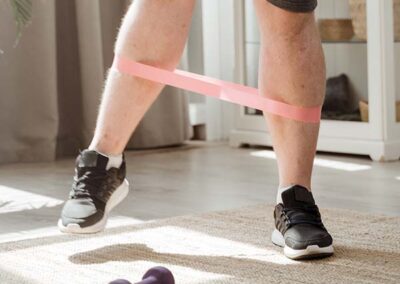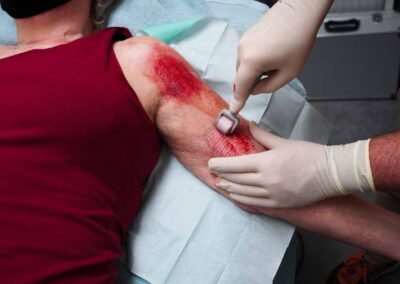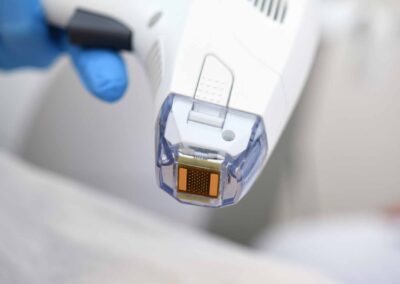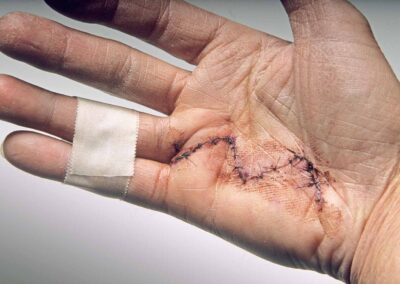Contractures

About Contractures
Scar contracture is a process that occurs due to an increased and prolonged wound healing response. During the final stage of wound healing (matrix remodelling), the persistent activation of myofibroblasts is a big contributing factor to the formation of scar contracture. Scar contractures will typically appear as fixed, rigid scarring that is confined to the area of trauma. The skin will feel tight and constricted, which can lead to pain, permanent physical disabilities and functional limitations. Deep burns (which lead to greater scarring), especially when over or near a joint can cause contractures. Contractures can be quite common after burn injury. Prevention of scar contractures involves surgery (skin grafting) and wound management to speed wound healing times, and therefore reduce scarring. In combination with this lots of active movement, maybe splinting and other advice given by a physiotherapist is important to prevent and treat contractures. Surgical technique is also important: incisions that are placed parallel to relaxed skin tension lines or that may have irregular angles are more likely to heal satisfactory without functional or cosmetic problems.
Burn contractures may be visible by around 4 weeks post burn, but they can continue to improve or worsen over many months post injury and require longer term care to monitor, prevent or minimise them.
Recommendations
Scar contracture must be treated as soon as possible since this type of scarring can result in restriction of movement around the injured area. If your scar is pulling at a feature e.g., your eyelid is being pulled down or your movement is feeling tight or limited, please see a specialist. The management of the scar contracture can include one or a combination of the following treatment options:
- Silicone-based products
- Massage
- Splinting
- Stretching and exercise
- Lasers
- Surgical intervention
Treatment will typically begin with non-invasive methods (silicone products, pressure therapy, exercise, or splinting); more invasive options such as laser or surgical release may be required if non-invasive options do not achieve the maximum benefit. After contracture surgery, the non-invasive treatment options help to maximise surgical results and prevent anymore loss of movement.
Treatment options for Contractures
More info about the categories
- Home Treatments: The major part of your scar treatment happens at home. There exists a wide variety of home treatments like pressure therapy, silicone, topicals etc…
- Non Invasive Treatments: Several scar management techniques performed by scar specialist have proven their efficacy and will help you to improve your scar.
- Minimally Invasive Treatments: These treatments have become increasingly popular over the last years. Highly visible results and short recuperation times are responsible for this popularity.
- Surgery: Reconstructive surgery is often seen as the last option after all other treatment options have failed. However, with burn scars it is often a necessary measure.
Below you will find an overview of all possible treatments. Click on the different categories to look for specific types of treatment.










